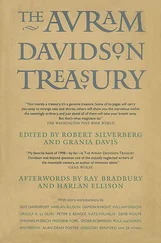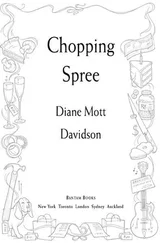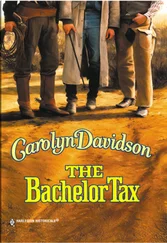L’Epée’s method, ‘ signes méthodiques ’, combined a system of gestures with other invented signs which represented all the verb ending, articles, prepositions and auxiliary verbs of the French language. It was difficult to learn, and deaf students reportedly preferred to use their own community’s signing outside the school. However, the method quickly spread throughout France, Europe and beyond. One of L’Epée’s disciples, a man called Lauren Clerc, moved to Hartford, Connecticut, in 1817 to help establish sign language in the New World and created American Sign Language (ASL for short).
Established signed languages, just like spoken ones, can still struggle for their survival. In Britain, for example, deaf children were forbidden to use sign language from the 1880s onwards and had to learn to lip-read instead. It wasn’t until 1974 that it was agreed that British Sign Language is a language in its own right, although even today it has no legal status.
A theatre for and by deaf people might sound a bit strange but of course mime has been with us since the mimetic arts first started. Even if you don’t understand the detailed language of the signing, the expressiveness of so many of them gives you a good clue as to what is happening. Nonetheless, the fact that the National Theatre of the Deaf (NTD), based in Connecticut, has been in existence since 1967 is a testament to the quality of their work. In the 1970s, NTD was the darling of the experimental and avant-garde, with directors like Peter Brook coming to experience and learn how the emotional directness of signing could be harnessed for dramatic effect.
Janiece, Ian and Claudia are part of the travelling NTD group and spend a good part of the year performing in schools and teaching children the basics of ASL. Janiece is the talking member of the team and translates for Ian and Claudia, who only sign. Claudia is from Germany so has a different, German sign language (which doesn’t put the verb at the end as in spoken German!).
Their sign language is a combination of spelling, gesture and cultural shorthand, which is perhaps what makes it so appealing for a theatrical performance. As an example they make the sign for Madonna, which is unmistakably that of pointy breasts, and then for Bill Clinton, which incorporates the sign for a sexual cheat. Like all languages, it seeks both clarity and efficiency, but on top of that can include character and reputation in a witty manner that dull spelling cannot.

National Theatre of the Deaf, Connecticut
Janiece agrees with that: ‘The deaf tend to put more of the spirit of something into the language — a form of bio-linguistics.’ The show itself is a wonderful experience. The actions are so dynamic and tell so much of the story that Janiece barely needs to translate the dialogue. It’s energetic and funny, and it’s easy to see why Peter Brook, theatrical magpie that he is, would want to include some of their techniques in his productions.
One of the most curious cases of sign language was uncovered in Nicaragua in Central America. In June 1986, American linguist Judy Kegl received an unusual phone call from the revolutionary government of Nicaragua. The education minister explained his country had a problem. They had opened two new schools for deaf children and were trying to teach them sign language. The trouble was, the children refused to be taught and were instead miming to each other with their own home-made gestures. Their teachers couldn’t understand what they were saying, and the children couldn’t understand the teachers. Would Judy fly down from Boston and advise the teachers what to do next?
Judy, a sign language expert from MIT, arrived in Nicaragua expecting to find the children communicating to each other with a jumble of basic gestures. Instead what she found astonished her. The children, most of whom had never met each other before and who had never been taught any form of signing, had compared the signs they had been using at home, shared them and modified them. They had added verb agreement and other grammatical conventions. They had, in fact, developed their own complex sign language with precise rules and order — now known as Idioma de Senãs de Nicaragua (ISN). It’s akin to the process in spoken language when pidgin — spoken by a community who have a variety of different languages and devise basic vocabulary to be able to communicate — evolves into creole when it’s passed on to the next generation for whom it is their first language. The Nicaraguan children seemed to be developing the equivalent of a signing creole, and, as with creole, the crucial transformation from crude gesture to language was syntax.
All human languages are governed by complex rules, by syntax. As Judy says, ‘Syntax, the constraints on language, is something all human beings share. Constraints that are imparted to us by the fact that we share a single human brain … the ability to organize information, that allows us to construct novel sentences that have never been said before; that allows us to tell a story, to prophesy, to lie. I can surely communicate for communication’s sake when I have syntax; then I can truly use a language.’
One child who learned the invented language at school was Adrian Perez, who now teaches Idioma de Senãs de Nicaragua himself. He describes learning ISN as ‘like a rocket going off in your head’. Without language, ‘you can’t express your feelings. Your thoughts may be there, but you can’t get them out. And you can’t get new thoughts in.’
Judy adopted two of the Nicaraguan deaf children, and they now live in the USA. They sign with great animation, using the face as much as their hands.
Judy talks about the four instincts that bring us to language. The first is rhythm. ‘The single gesture doesn’t have rhythm. But you bring a whole bunch of gesturers together, and they repeat, and you create an environment in which communication has the kind of rhythmicity that draws instinct.’ The second, she says, is ‘monkey see, monkey do’, which is about aping someone. In fact she admits that the term is totally wrong, because monkeys don’t ape, but primates do, so it should really be ‘ape see, ape do’, but that doesn’t sound nearly as good. Number three is the language instinct: we are born with these expectations for what a language is and what a language should be like. And number four she calls peer pressure — the fact that the very young child thinks that what they believe to be the grammar of the language is what everyone believes. They get to be corrected. They become like the people around them.
So does sign language, which, after all, is as proper a language as any other, have the same critical period for learning as spoken language? Normally up until puberty any language can be learned with ease, but after that it’s a much harder task.
‘If you’re beyond the critical period,’ says Judy, ‘I can expose you to language until the cows come home, and you’re not going to acquire it the way that a native speaker would.’ If you’re before the critical period for language, she adds, the beauty is, all you need is the compulsion to copy and to be like others.
Such are the expectations of what language is that what is in effect a series of gestures can become a language. So the young children in that first generation in Nicaragua, who came into an environment with older children who were just gesturing, using a whole mish-mash of communication, not language, were fooled into thinking that the gestures were a language; then their expectations kicked in and actually turned it into a full-blown language. The heart of it is language always comes from our expectations about what language should be. Most of the time our expectations come to fit in with the expectations of the adults around us. In the Nicaraguan case the language instinct created a whole new sign language.
Читать дальше













